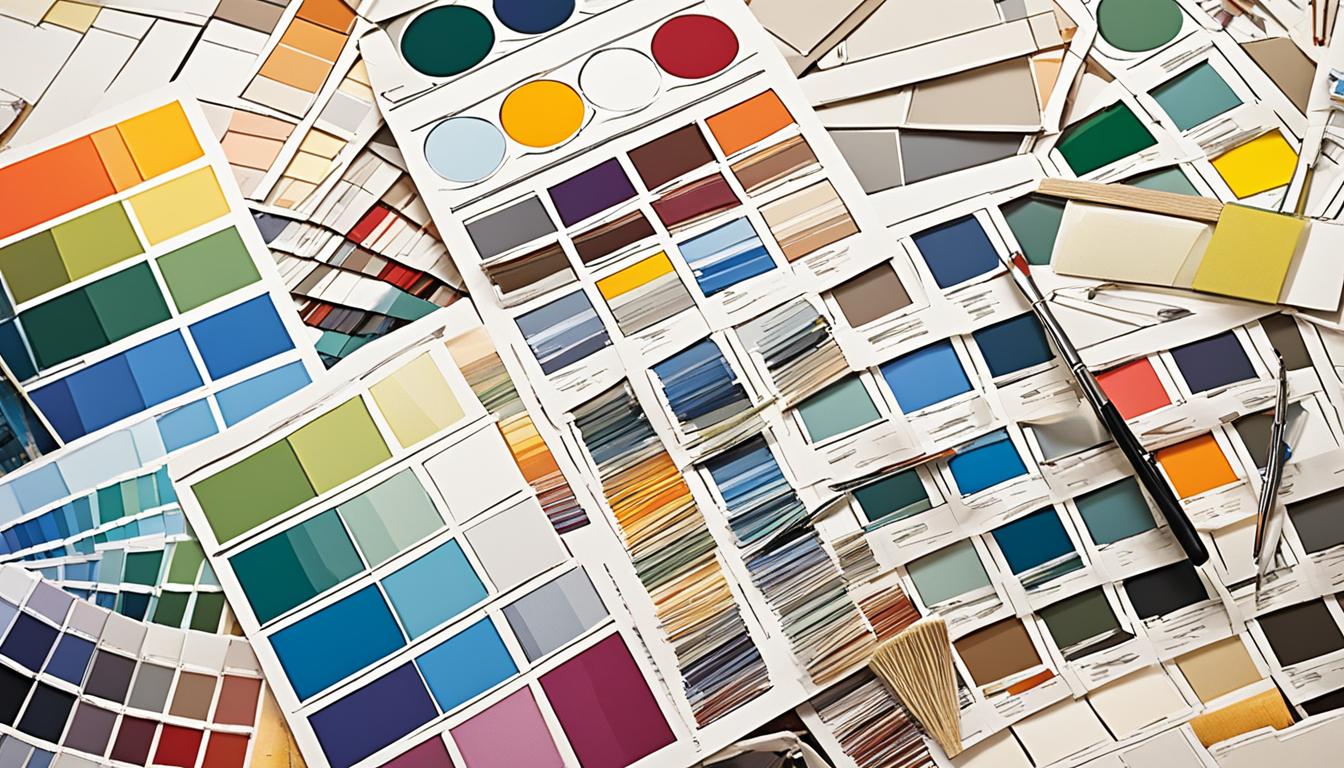Welcome to your comprehensive guide on how to get into the interior design career! This dynamic field offers a plethora of opportunities for creative individuals eager to shape spaces and enhance the environment around them. Understanding the diverse career paths, educational requirements, and essential skills will help you launch your interior design career effectively. Exploring different specialties within interior design, such as residential, commercial, or sustainable design, can help you tailor your education and experience to your specific interests. In addition to completing a relevant degree program or apprenticeship, gaining hands-on experience through internships or entry-level positions can provide valuable insight into the industry. When you’re ready to take your career to the next level, consider pursuing an interior design masters application to further hone your expertise and open doors to advanced opportunities within the field.
This guide serves as a roadmap, providing valuable insights that will empower you to pursue a career in interior design. Whether you’re seeking to explore relevant degree programs or practical experience through internships, having the right information at your fingertips will pave your way to success in this vibrant profession.
Key Takeaways
- Most interior designers hold at least a bachelor’s degree, with advanced degrees providing more opportunities.
- Relevant coursework is vital, covering topics like interior design, drawing, and CAD.
- Consider a broad range of design classes to lay a robust foundation for your career.
- When choosing a school, focus on its reputation and job placement success.
- Internships are crucial for gaining practical skills and experience in the field.
- Organizations like ASID and IIDA provide valuable resources and networking opportunities for students.
What is Interior Design?
Understanding the principles of interior design is essential for anyone interested in creating functional and beautiful spaces. Interior designers are professionals who focus on planning, designing, and managing interior environments. They work across various sectors ranging from residential to commercial projects. A successful interior designer must blend creativity with technical skills, ensuring that each space is both aesthetically pleasing and pragmatically suitable for its intended use.
Understanding the Role of an Interior Designer
The role of an interior designer involves much more than just choosing colors and furnishings. Designers assess a client’s needs, preferences, and budget while considering the practicality and safety of the proposed design solutions. This process requires collaboration with architects, contractors, and sometimes even other designers. Knowledge of the key elements of interior design, such as space planning and design concept development, plays a crucial role in delivering exceptional results.
Key Elements of Interior Design
Several key elements shape the foundation of good interior design. Understanding these components can help aspiring designers succeed in their careers. The following table provides an overview of these vital aspects:
| Key Element | Description |
|---|---|
| Space Planning | The arrangement and division of space to enhance functionality and flow. |
| Color Palette | The selection of colors influences mood and style, significantly impacting the overall atmosphere. |
| Furniture Selection | Choosing the right furniture combines comfort with aesthetics, ensuring it aligns with the design goals. |
| Lighting Design | Effective lighting enhances the visual appeal and ensures appropriate functionality of the space. |
| Materials and Textures | Diverse materials add depth and interest, making spaces feel inviting and cohesive. |
| Client Collaboration | Working closely with clients ensures their vision is realized, fostering satisfaction and success. |

What Do Interior Designers Do?
Interior designers play a vital role in shaping spaces that enhance functionality and aesthetics. Understanding their day-to-day tasks offers insight into the interior designer job responsibilities and the skills necessary for success in interior design. This encompasses a variety of activities, from collaborating with clients to overseeing project execution.
Core Responsibilities and Duties
Interior designers engage in a plethora of responsibilities that are essential to delivering successful projects. Key duties include:
- Consulting with clients to identify project goals and preferences.
- Creating detailed design plans and concepts using design software.
- Managing budgets and timelines to ensure projects remain on schedule.
- Coordinating with contractors, suppliers, and other professionals to facilitate project execution.
- Staying updated on industry trends and sustainable design practices.

Skills Necessary for Success
The path to becoming a proficient interior designer requires a diverse skill set. Among the skills necessary for success in interior design are:
- Creativity to conceptualize innovative design solutions.
- Problem-solving abilities to navigate challenges that arise during a project.
- Communication skills for effectively interacting with clients and team members.
- Technical proficiency in software like AutoCAD and design applications.
- Time management to juggle multiple projects simultaneously.
- Visual awareness to ensure designs are aesthetically pleasing and functional.
Exploring these responsibilities and skills provides a clear picture of the dynamic nature of an interior designer’s role within the industry.
Understanding Interior Design Education Requirements
Pursuing a career in interior design demands a solid educational foundation. While a formal degree may not be an absolute requirement for every position, many employers seek candidates with a two-year associate’s degree or a four-year bachelor’s degree from accredited institutions. Curriculum components, such as CAD, color theory, and building codes, are common in these programs, providing essential knowledge for aspiring designers.
Degrees and Certifications
The interior design field recognizes several degrees and certifications that can significantly enhance your career prospects. For instance, obtaining degrees and certifications in interior design from accredited schools is vital. Many entry-level positions can be accessed with a two-year degree, yet a bachelor’s degree is often necessary to stand out in a competitive job market. A focused certificate may be sufficient if you aim solely at the decorating aspect without broader responsibilities.
| Degree Type | Duration | Typical Coursework | Licensing Requirements |
|---|---|---|---|
| Associate’s Degree | 2 years | Fundamentals of design, color theory, CAD | Varies by state |
| Bachelor’s Degree | 4 years | Architecture, space planning, textiles, software | NCIDQ exam required in many states |
| Certificate | Varies | Decorating principles, basic design | Not required |
Choosing the Right Interior Design School
Selecting the right institution to pursue your interior design education requirements can significantly influence your success. Researching various schools helps you find programs aligning with your career goals and offering comprehensive job placement assistance. Pay particular attention to schools that offer courses on relevant software applications, such as Photoshop, InDesign, and AutoCAD. Building a strong portfolio of design projects is essential for attracting employers or clients in this field. Engaging in networking opportunities can also open doors to mentorship and job prospects within the industry.

How to Get Into Interior Design Career
Embarking on your journey in the interior design industry can be exciting yet daunting. Understanding your options is essential as you weigh the routes available to you. The steps to start an interior design career can range from formal education to self-study approaches, each with its own set of advantages.
Formal Training Versus Self-Study
Formal training in interior design typically involves pursuing a degree in interior design or a related field such as architecture. This path equips you with the foundational knowledge and skills necessary to compete against candidates with bachelor’s degrees in the same discipline. However, self-study can also be beneficial. By exploring online courses and utilizing industry literature, you can develop a robust understanding of design principles at your own pace. Familiarizing yourself with current software and 3D technology used in the industry is crucial, as these tools are integral to modern design practices.
Gaining Hands-on Experience Through Internships
One of the most effective ways to break into the industry is through internships, which provide practical exposure and networking opportunities. Gaining hands-on experience through internships allows you to apply theoretical knowledge in real-world settings, enhancing your understanding of the interior design process. While available apprenticeships can be scarce, seeking mentorship and engaging with the design community can significantly enrich your learning experience. As you build your portfolio and make valuable connections, you’ll find that having an interior design mentor can be a game changer in shaping your career trajectory.







